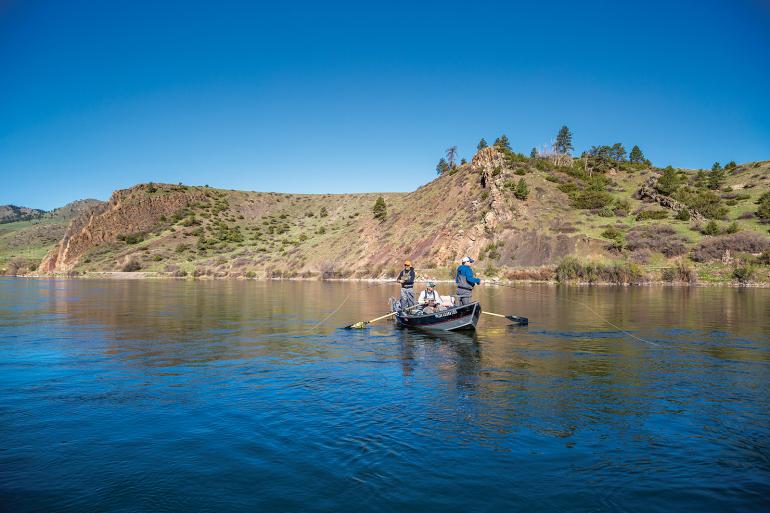Missouri River
A tailwater delight.
Although not necessarily a classic trout stream, the Missouri River downstream of the Holter Dam––the Craig section––might be Montana’s best trout fishery. The river can withstand a great deal of fishing pressure and boasts large trout that gorge themselves during the thick hatches.
The Missouri here is a flat and expansive watercourse whose trout holes are inconspicuous. As such, time on the water is often required before the mighty Mo’ lives up to its reputation, and fishing with a guide or an angler experienced on the Missouri River can be helpful.
A few sections upstream of Holter Dam also produce good fishing, mostly below dams. The reservoirs above these dams often host a few larger fish.
Access
Access is very good in the Craig section, with 15 official access points along the roughly 35 miles between Holter Dam and Cascade. That said, there isn’t a ton of public land, so access is usually limited to official sites. But as long as you get on the water from a public place, you can wade to your heart’s content within the high-water mark.
The Hauser tailwater has access points at the dam and Beaver Creek. Upstream, Missouri River public access sites are few and far between.
Flows
A typical flow for the Missouri below Holter Dam is between 4,000 and 5,000cfs. Flows spike to over 10,000cfs during runoff, but the river usually remains fishable, especially above the Dearborn River confluence. Despite surging flows, the current remains slow and the water flat.
When to Go
There’s not really a bad time to fish the Missouri around Wolf Creek and Craig. Being a tailwater, it fishes throughout winter and is a go-to fishery for many guides and anglers during runoff. Fish will hold in different types of water at different times of year, so it helps to get a report.
Other sections are more susceptible to warm water in summer and freezing in winter, and some see seasonal fish runs.
Fish
Good-sized rainbow and brown trout are the quarry below Holter Dam. Montana FWP surveys from 2020 indicated that fish numbers are about on-par with the long-term average for the Missouri at around 1,700 rainbows and 290 browns per mile. Trout here average 16 to 17 inches in length.
Deep nymphing with a scud or sowbug, with appropriate line mending (which is crucial here), is a go-to method. When the bugs are out, you’ll find some of the world’s best dry-fly fishing. Some noteworthy hatches include baetis (both in spring and fall), pale morning duns (June and July), tricos (July and August), and a myriad of caddis (spring through fall) and midge hatches (late winter and spring).
The short stretch between Holter and Hauser reservoirs hosts sizeable trout seasonally.
Row vs. Wade
The Missouri’s flow is mild throughout the Craig section, so both wade and boat fishing are relatively easy and productive, though wading can get tough during runoff. Boat fishing is more popular and covers more water, but wade fishing allows anglers to work the best holes more thoroughly.
This holds true for the upstream sections as well, except for the Hauser tailwater, where the only way to float is to motorboat up from Holter Reservoir and drift back down.
Regs
Walleyes occasionally filter through Holter Dam, and northern pike have been found upstream of the dam. To encourage the harvest of these predators, there is no limit on walleye or pike in this section. There are many other regulations from the headwaters to Great Falls, so be sure to stay current. Check FWP fishing regulations to stay up to date on restrictions and bag limits.
Getting There
Missouri Headwaters State Park is about 30 miles west of Bozeman and the Fairweather FAS is a short drive to the north, on the west side of the Horseshoe Hills.
To get to the Hauser tailwater, head toward Helena, taking Lake Helena Drive to the dam. Alternatively, go to Beaver Creek and pass through the tiny communities of York and Nelson.
To get to the Craig section, take I-15 north out of Helena, which takes you to Wolf Creek after about 35 miles. Craig is another five miles or so downstream, and Cascade is another 20.
Joshua Bergan is the author of The Flyfisher’s Guide to Southwest Montana’s Mountain Lakes, and has written columns for Montana Sporting Journal and American Angler, among others.











